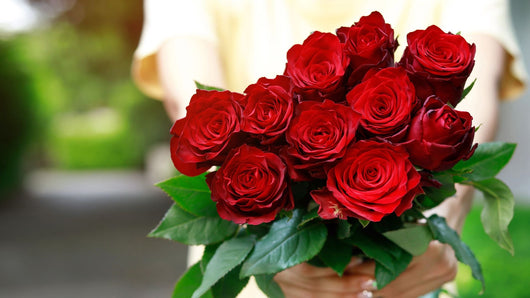
Gardening in Chicago comes with unique challenges, thanks to the city’s unpredictable weather and cold winters. If you’re a flower lover looking to keep your blooms thriving, understanding how to care for them in this environment is key. From selecting hardy varieties to managing soil conditions and protecting flowers from frost, this guide covers everything you need to create a vibrant, flourishing garden in the Windy City.
Understanding Chicago's Climate
Chicago falls into USDA Hardiness Zone 5, meaning winters can be brutally cold, with temperatures dropping below zero. Summers, on the other hand, can be hot and humid. These extreme temperature shifts require careful flower selection and strategic care. The growing season typically runs from late April to early October, so planning your planting schedule accordingly is essential.
Selecting the Right Flowers for Chicago
Not all flowers can handle Chicago’s fluctuating temperatures. When choosing plants, consider these factors:
-
Cold hardiness: Can they survive freezing temperatures?
-
Heat tolerance: Will they withstand the summer heat?
-
Low maintenance: Are they resistant to common pests and diseases?
Opting for native and hardy perennials ensures long-lasting blooms with minimal effort.
Top Perennial Flowers for Chicago Gardens
1. Echinacea (Coneflower)
Echinacea is a resilient, low-maintenance perennial that thrives in Chicago’s climate. It’s drought-tolerant and attracts pollinators like bees and butterflies.
Care Tips:
-
Plant in full sun.
-
Ensure well-draining soil.
-
Deadhead spent blooms for continuous flowering.
2. Daylilies
Daylilies are a favorite among Chicago gardeners due to their ability to thrive in various soil conditions. They bloom profusely from early summer to fall.
Care Tips:
-
Water moderately.
-
Remove dead flowers to encourage new growth.
-
Divide every few years to prevent overcrowding.
3. Peonies
Peonies are stunning perennials that bloom in late spring and early summer. They can survive Chicago winters with minimal care.
Care Tips:
-
Plant in full sun with well-draining soil.
-
Avoid planting too deep to ensure proper blooming.
-
Stake taller varieties to support heavy flowers.
4. Black-Eyed Susan
This bright yellow flower adds a pop of color to Chicago gardens. It’s easy to grow and drought-resistant.
Care Tips:
-
Prefers full sun but tolerates partial shade.
-
Requires occasional deadheading for extended blooming.
-
Thrives in various soil types.
5. Hostas
Perfect for shady spots, hostas provide lush foliage and beautiful flowers.
Care Tips:
-
Grow in partial to full shade.
-
Keep soil moist but well-drained.
-
Protect from slugs and snails.
Annual Flowers to Brighten Your Garden
1. Zinnias
Zinnias are colorful, fast-growing annuals that bloom from late spring until the first frost.
Care Tips:
-
Plant in full sun.
-
Water at the base to prevent powdery mildew.
-
Deadhead for prolonged flowering.
2. Marigolds
These vibrant flowers not only brighten your garden but also repel pests like aphids.
Care Tips:
-
Prefer full sun.
-
Require minimal watering.
-
Pinch back early growth for bushier plants.
3. Petunias
Petunias provide long-lasting color and are great for hanging baskets or garden beds.
Care Tips:
-
Water regularly, especially in dry spells.
-
Place in a sunny location.
-
Trim leggy growth to encourage bushier plants.
4. Impatiens
Perfect for shady gardens, impatiens bloom throughout the growing season.
Care Tips:
-
Keep soil consistently moist.
-
Plant in partial to full shade.
-
Fertilize every few weeks for abundant blooms.
5. Pansies
Pansies thrive in cool temperatures, making them ideal for early spring and fall planting.
Care Tips:
-
Grow in partial shade or full sun.
-
Water consistently.
-
Remove spent flowers to encourage reblooming.
Soil Preparation and Fertilization
Good soil is the foundation of a healthy garden. In Chicago, native soil tends to be heavy clay, which can retain too much moisture.
Tips for Preparing Soil:
-
Test your soil to determine nutrient deficiencies.
-
Amend with compost to improve drainage and fertility.
-
Use mulch to maintain soil moisture and reduce weeds.
Fertilization varies depending on the flower type, but in general:
-
Use slow-release fertilizer in early spring.
-
Apply liquid fertilizer for flowering annuals every 2-3 weeks.
-
Avoid excessive nitrogen, which can lead to leafy growth but fewer blooms.
Watering Practices
Chicago’s weather can be unpredictable, so consistent watering is crucial.
Best Practices:
-
Water early in the morning to reduce evaporation.
-
Aim for deep, infrequent watering rather than shallow, daily watering.
-
Use soaker hoses or drip irrigation to minimize water waste.
Mulching and Weed Control
Mulching not only conserves moisture but also prevents weeds.
Best Mulch Options for Chicago Gardens:
-
Organic mulch (wood chips, bark, straw): Helps enrich the soil.
-
Inorganic mulch (gravel, pebbles): Provides long-term weed control.
Pruning and Deadheading Flowers
Regular pruning keeps flowers healthy and encourages new growth.
Tips:
-
Deadhead spent blooms to extend the flowering season.
-
Cut back perennials in late fall for winter prep.
-
Use sharp, clean tools to prevent disease spread.
Protecting Flowers from Pests and Diseases
Common pests in Chicago include aphids, slugs, and Japanese beetles.
Natural Solutions:
-
Introduce ladybugs to eat aphids.
-
Use neem oil for fungal infections.
-
Hand-pick larger pests like beetles.
Winterizing Your Garden
Chicago’s freezing temperatures can be tough on flowers.
Winter Care Tips:
-
Mulch perennials to insulate roots.
-
Bring potted plants indoors before the first frost.
-
Cut back dead foliage to prevent disease.
Conclusion
Caring for flowers in Chicago requires knowledge of the city’s climate, proper plant selection, and seasonal maintenance. With the right approach, you can enjoy a thriving flower garden year-round. Whether you're growing perennials, annuals, or indoor flowers, these tips will help you create a stunning, resilient garden.